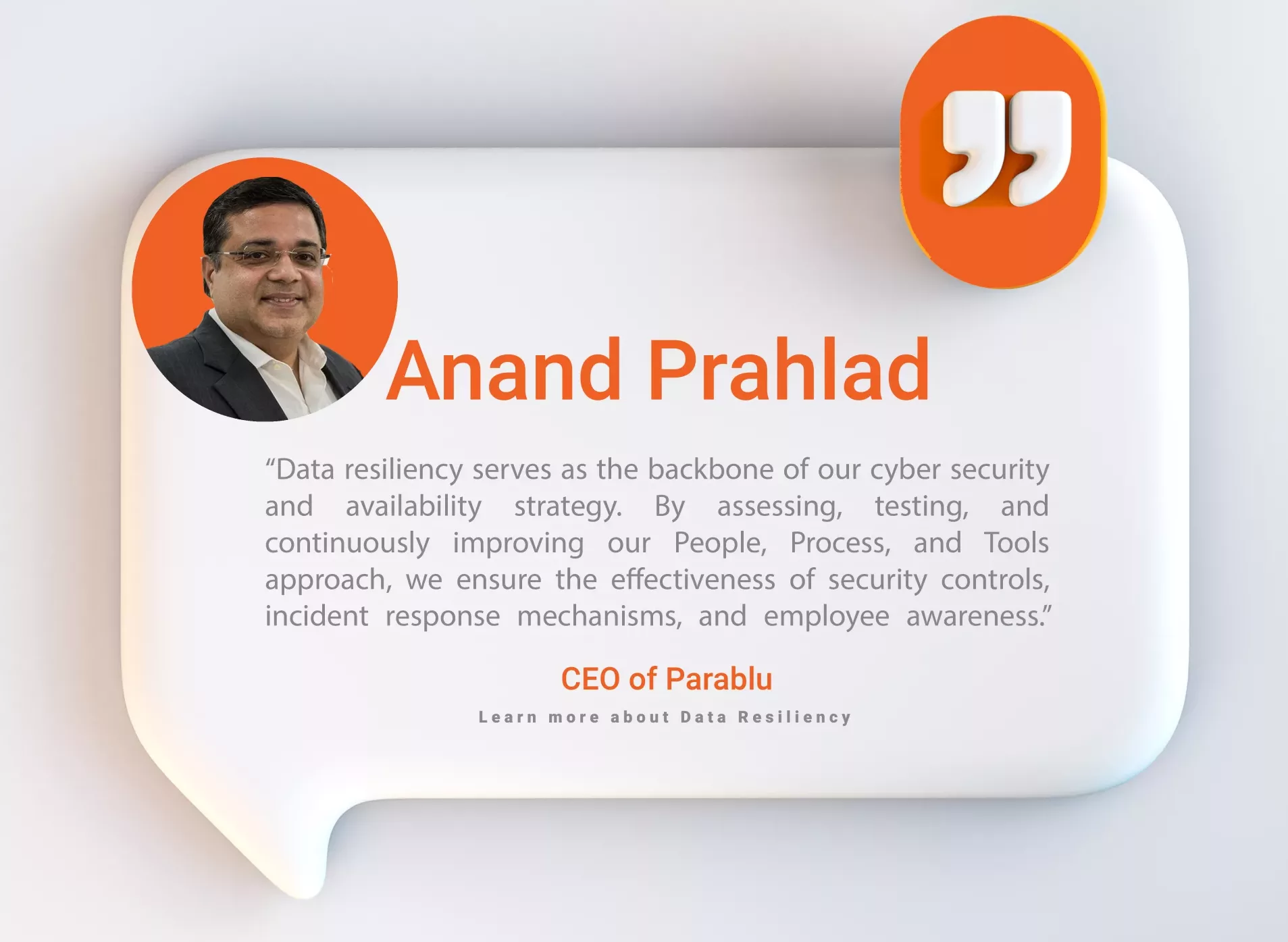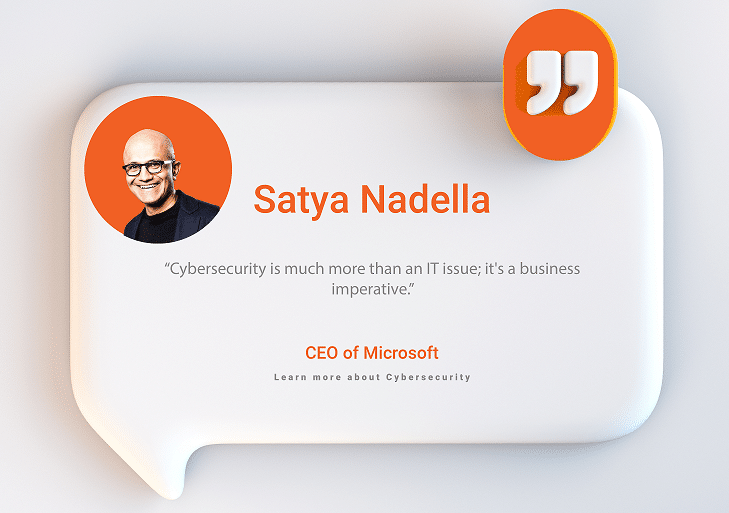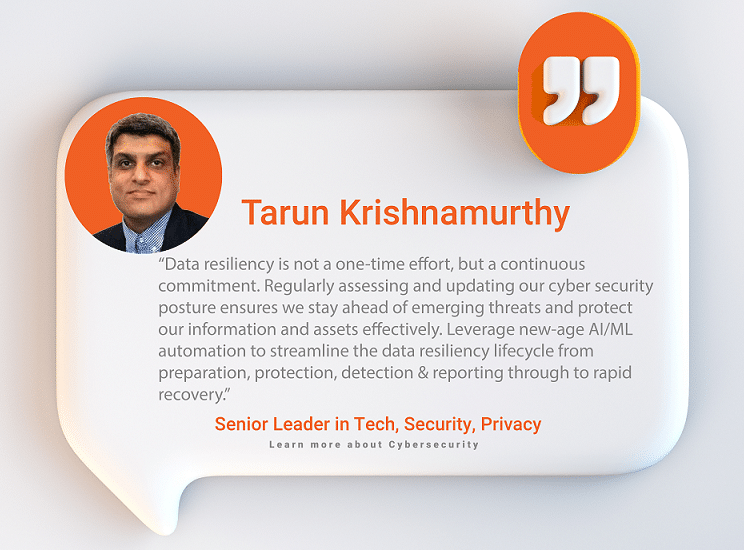Behind the Security Curtain: A Questionnaire Series with Cybersecurity Experts

As cyber threats continue to grow in sophistication, the role of CISOs and other cyber security experts has become crucial. And when I say crucial, it’s in terms of safeguarding data.
Data resiliency is the key to any organization’s cyber security and CISOs have made this central to the overall cybersecurity strategy.
“Cybersecurity is much more than an IT issue; it’s a business imperative.” – Satya Nadella, CEO of Microsoft.
With technology integrated into all aspects of business, data security problems now impact every operation. Attacks can disrupt your entire business operations. That’s why at Parablu, we always say cyber strategies are no longer just IT problems. They are bona fide business problems! As per a survey by Deloitte, around 70% of organizations face common cyber threats.
Picture this:
A prominent company called ABC is recovering from a recent ransomware attack. Neil, the CEO, and Nitya, CISO, are concerned about the potential for future attacks. They are improving their security posture to make sure they don’t get infected again. They are keen to strengthen their defenses and ensure comprehensive protection against cyber security incidents in the future.
But that’s not enough!
Neil and Nitya should also investigate lingering data security problems they may have been overlooking during recovery.
In this blog, I’ll explain how to ensure you’re diligent in your data resiliency efforts. You’ll learn the intricate realm of data security challenges and gain insights on how cyber security experts are mitigating these types of cyber security challenges.
What is your current data resiliency posture, and how effectively is it protecting critical data?
PPT (People, Process, and Tools) is our best approach against data security problems. We assess our current data resiliency and how well it protects critical data. Maintaining a strong data resiliency posture is vital for data security and availability. We have backups, security controls, disaster recovery plans, and employee training to achieve this. But we know threats evolve, so we improve our cyber security posture by testing controls and updating plans.
“Data resilience serves as the backbone of our cyber security and availability strategy. By assessing, testing, and continuously improving our People, Process, and Tools approach, we ensure the effectiveness of security controls, incident response mechanisms, and employee awareness.” – Anand Prahlad, CEO of Parablu.

How can we identify and prioritize our most critical data and applications for backup and recovery purposes?
As a cyber security expert, to identify and focus on critical data and applications for backup and recovery, we need to:
- Assess the potential impact of data loss on business operations. Secure cloud storage with stringent privacy standards.
- Identify key business processes and associated data dependencies.
- Analyze data sensitivity and regulatory requirements.
- Consider historical incident trends and business continuity plans.
- Install a risk-based approach to focus on backups.
- Incorporate ransomware defense suite as a defense line.
What are the most likely causes of data loss or corruption, and how can we protect ourselves against them?
Data loss or corruption can result from hardware failures, human errors, data security problems like ransomware attacks, or natural disasters. To protect against these risks, prioritize data resiliency. Regularly back up important data, store it in a separate location or reliable cloud services and use robust resiliency software. Educate users about safe computing practices and adopt a proactive approach to data security. Being cautious, prepared, and proactive helps prevent data loss or corruption.
How can we ensure adequate backup and recovery capabilities against data security problems, including offsite storage and redundancy?
It’s essential to have offsite storage and redundancy. Offsite storage means keeping copies of your data in a separate location, away from your main system. Redundancy involves creating copies of your data, so you have others to rely on if one fails. This protects against data leak due to hardware failures, data security problems, human errors.
How can we ensure our data resiliency posture is regularly assessed and updated to address emerging threats and risks?
“Data resiliency is not a one-time effort, but a continuous commitment. Regularly assessing and updating our cyber security posture ensures we stay ahead of emerging threats and protect our information and assets effectively. Leverage new-age AI/ML automation to streamline the data resiliency lifecycle from preparation, protection, detection & reporting through to rapid recovery.” – Tarun Krishnamurthy, Senior Leader in Tech, Security, Privacy.
To ensure regular assessment and updating of data resiliency posture we:
- Regularly assess risks and vulnerabilities.
- Stay updated on security trends and compliance.
- Update backup procedures for resilience.
- Train employees for heightened security awareness.
- Establish tested incident response plans.
Empowering Organization’s Data Resilience
Organizations must be bold in today’s evolving cyber landscape. Cyber security threats continue to advance, recent data breaches can have severe consequences. A company can protect its critical data by embracing the principles of people, processes, and tools. Remember, data resiliency is not a one-time effort but an ongoing commitment.
To strengthen data resiliency, organizations should take a proactive and adaptive approach. This involves assessing and updating our data resiliency posture. It can help us to address emerging cyber security threats and risks. Keeping up with security trends helps align strategies with industry best practices.
Organizations must focus on data resiliency and take a comprehensive approach to safeguard it.
Are you interested in learning more about data resiliency and cyber security strategies? Subscribe to our YouTube channel for regular updates to strengthen your organization’s defenses. Join us on the journey with cyber security experts toward a more secure future!
Stay tuned for more exciting topics.











